
Looking back through the eight decades of the Le Mans 24 Hours, it’s clear that certain marques are synonymous with the different periods of the race: Audi in the contemporary era, Porsche in the ’70s and ’80s, Jaguar in the ’50s, Alfa Romeo and Bentley in the ’30s. The early 1960s were all about Ferrari, but Ford’s domination of the Le Mans 24 Hours during the second half of the 1960s has now passed into legend as the archetypal story of what sheer force of will can achieve. Commercial considerations be damned: Ford had to win. And it was all Enzo Ferrari’s fault.
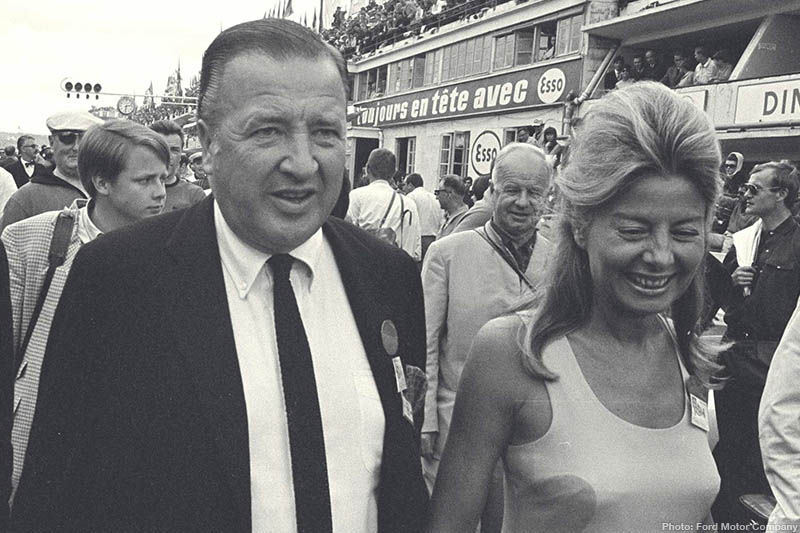
It started back in 1963. The Ferrari company was struggling financially and forced to look for new investment; the Ford Motor Company under Henry Ford II looked like the best option and negotiations opened between the two companies. Late into the process, with millions of dollars spent on legal fees and an audit as part of the potential take-over, there was just one stumbling point: Ferrari boss Enzo Ferrari’s insistence on retaining control of the company’s racing programme – and in particular the possibility of racing at the Indy 500. To Ford, that was non-negotiable: the Indy 500 was to be Ford’s race.
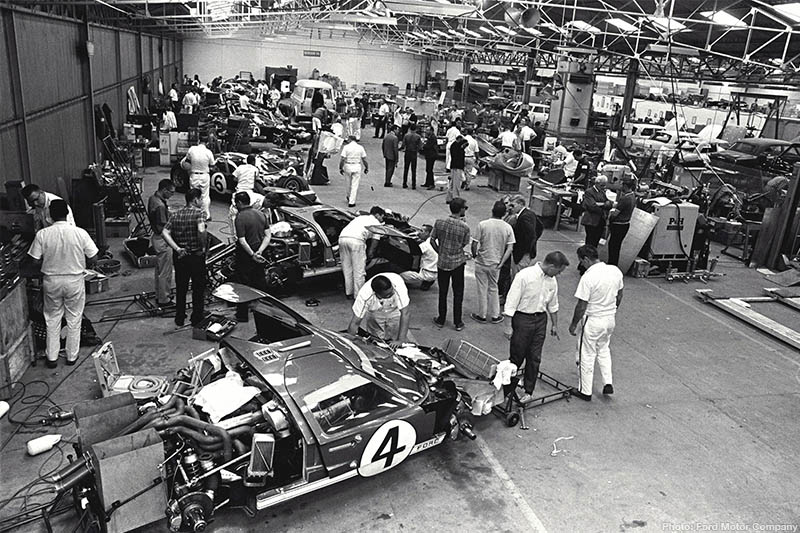
Il Commendatore was typically Latin. No matter the consequences, he terminated the talks with immediate effect. Racing would be his domain. Henry Ford II was typically American: he wasn’t going to take such a slight lying down. It seems that wouldn’t like Hank The Deuce when he’s angry. Ferrari would be made to pay, and they would be humiliated in the arena that meant the most to them: the race track. No matter what, Ford must beat Ferrari at the Le Mans 24 Hours, a race it had been winning since 1960.

Ford had powered cars at Le Mans since the early ’60s, such as a Marcos in 1962, and even a pair Ford Thunderbirds were provisionally entered in the 1957 edition, though they didn’t race. But with no viable sportscar programme to kickstart their Le Mans plan, new relationships were needed to shortcut the route to success.
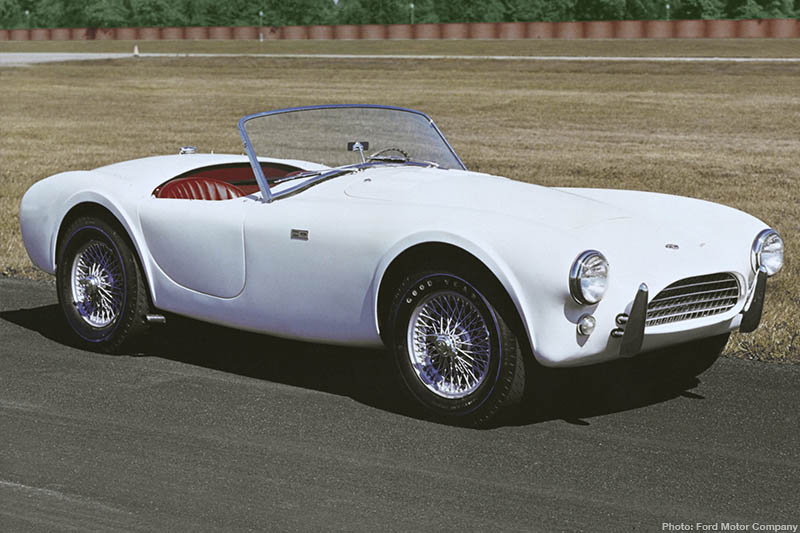
A two-pronged approach was taken, with an already successful Anglo-American partnership the first step. Legendary American driver Carroll Shelby had blitzed the European racing scene in the late ’50s, finishing up with victory alongside British driver Roy Salvadori at Le Mans in 1959 as part of the works Aston Martin team. Forced to retire from racing due to heart problems, Shelby turned his considerable talent to constructing cars, and found almost immediate success by shoe-horning big Ford V8s into imported, bulked-up British AC Ace sportscars.

The Cobra was born, and Ford would be represented at Le Mans with a serious racing effort. A pair of hardtops were raced in 1963, one British-entered and one American. The British Cobra finished seventh overall, winning the GT class. Ford also powered a Lola MkVI GT – a precursor to the larger collaboration that would follow.
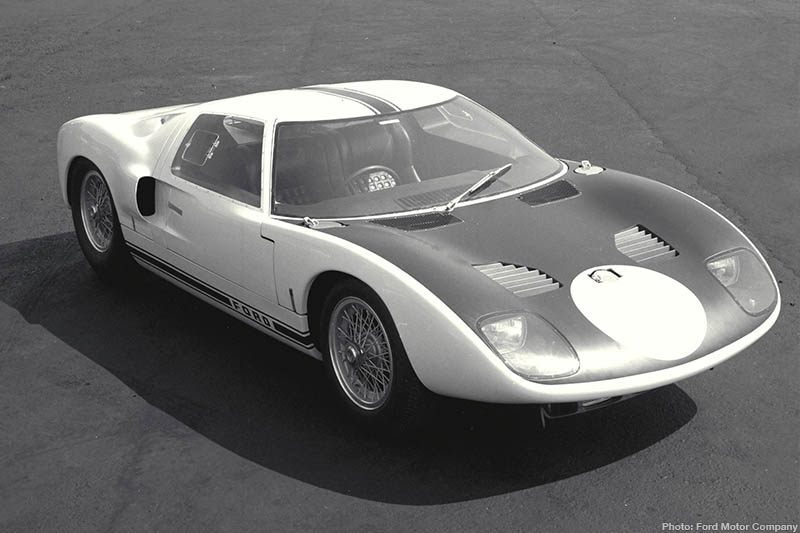
After looking at Cooper and Lotus at the beginning of 1963, Ford fixed its eye on Lola: the relationship was cemented with the supply of two MkVIs to the mothership in the US and a transatlantic knowledge exchange. Ex-Aston Martin team manager John Wyer was also brought in to head up the new team: a name that would take Ford to its highest success and make the blue and orange of Gulf Oil perhaps the best-known sportscar livery ever.
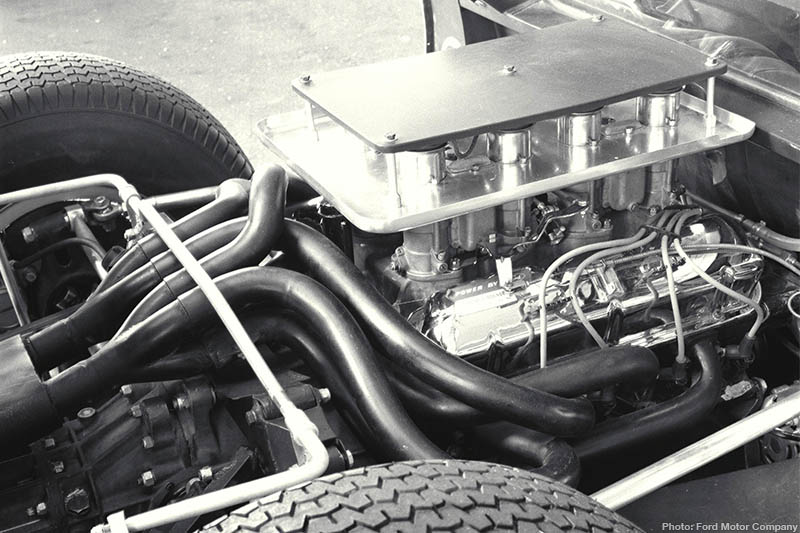
Construction of the initial Ford GT began at Lola in the UK, prior to the formation of the dedicated Ford Advance Vehicles. The same 4.2-litre Ford Fairlane engine from the MkVI Lola was transplanted into the new car, and the iconic body began to take shape. This initial variant was narrow and long, though the rear three-quarters and slashed rear aspect are still instantly recognisable. It was called project Grand Touring 40, with the 40 representing the overall height in inches of the car.
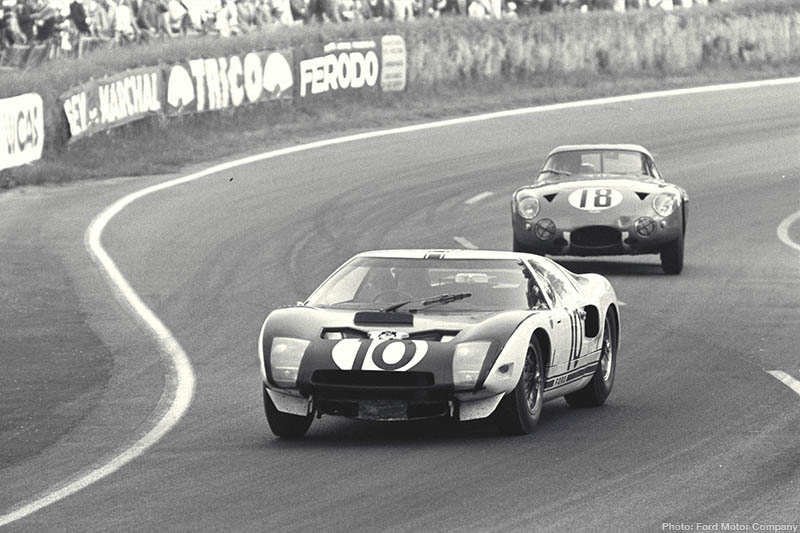
After an initial, unsuccessful run at the 1964 Nürburgring 1000kms it was time for Le Mans. A trio of newborn GT40 MkIs, a pair of Shelby Cobra Daytona Coupés and a British Cobra were entered, along with two Sunbeam Tigers also powered by Ford V8s. The late Roy Salvadori (who passed away just last week) joined an impressive line-up of drivers – Phil Hill, Bruce McLaren, Richie Ginther, Masten Gregory, Richard Attwood and Jo Schlesser – in Ford’s nascent programme, but like the later Porsche 917 the first iteration of the GT40 proved to be scarily unstable at high speed. Both ‘Salvo ‘and Schlesser survived worrying accidents at the pre-race Test Day.
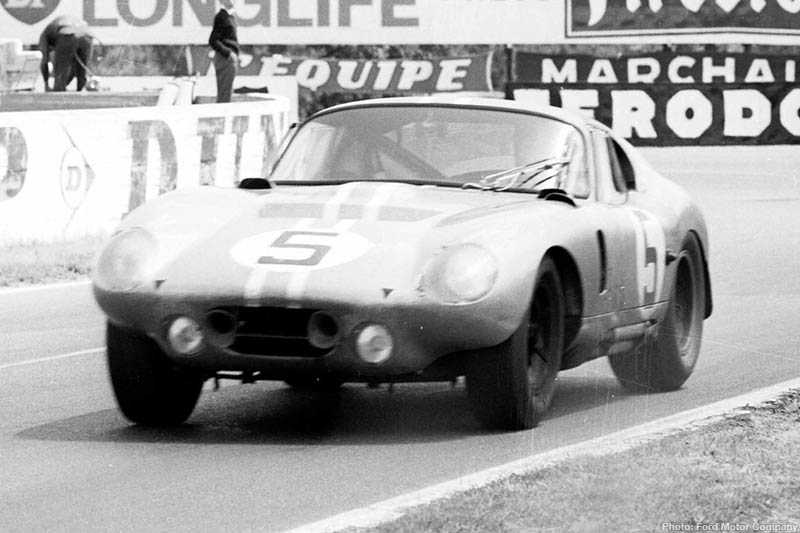
The #5 Bob Bondurant/Dan Gurney-driven Daytona finished fourth overall at Le Mans, winning the GT5.0 class, but still Ferrari walked away with the silverware: worse was that Ferraris also finished second, third, fifth and sixth.
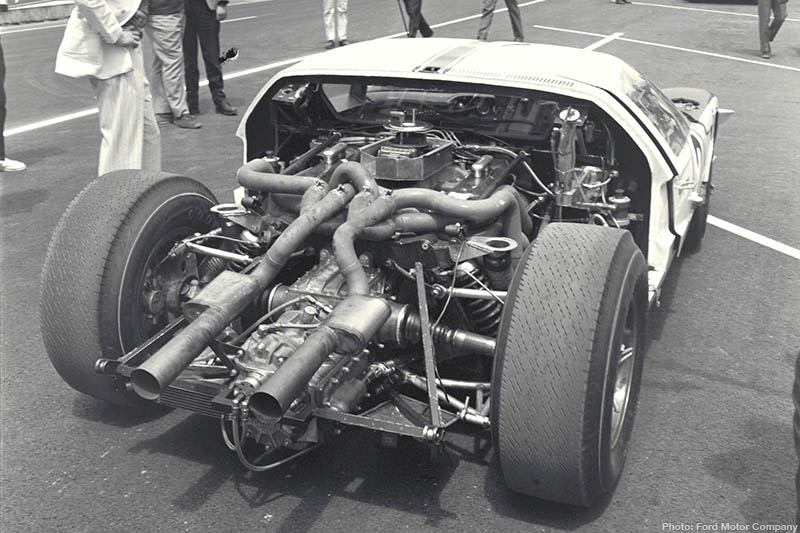
Cue the Shelby name coming to the fore: from then on the programme would be run from America by Shelby’s team. The car was redesigned and the engine changed to the 7-litre V8 from a Ford Galaxie.

The MkII won the 1965 Daytona 2000, but Le Mans was no happier hunting ground despite Ford pulling out all the stops and entering 11 cars.
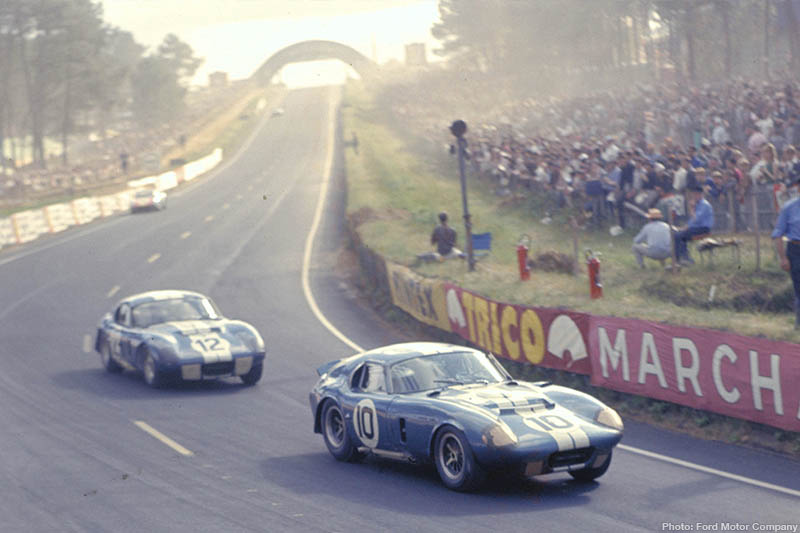
A pair of Shelby American Inc Ford GT40 MkIIs, a quartet of up gunned 4.7-litre V8 MkIs (American, British FAV, Swiss and a Ford France Roadster-bodied entry) and a quintet of Daytonas were ranged against a dozen Ferrari variants: 365 P2, 330 P2, 250LM, 275 P2, Dino 166…
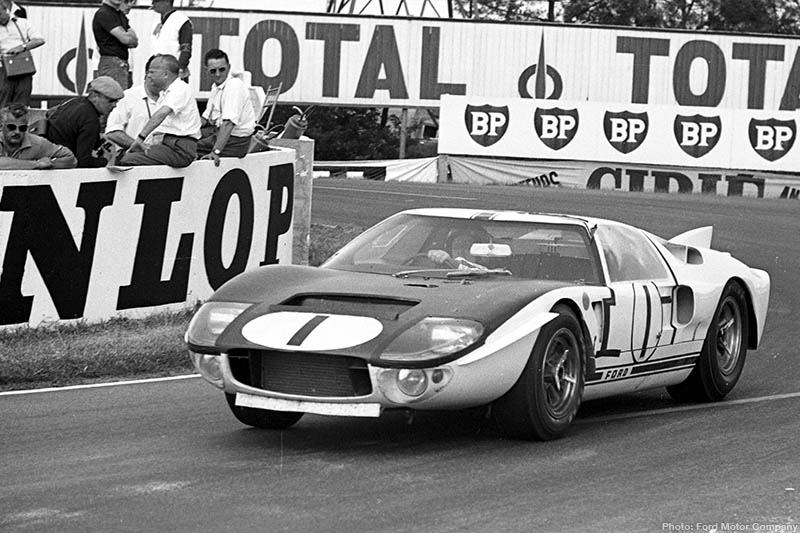
The finned MkIIs qualified on pole and fourth (also posting the fastest lap of the race) – but it was still not enough to defeat Ferrari. In fact, the humiliation was still by Ferrari, not of Ferrari in ’65: neither MkII finished, nor did the MkIs (overheating problems plagued them), and four of the five Daytonas also stopped.
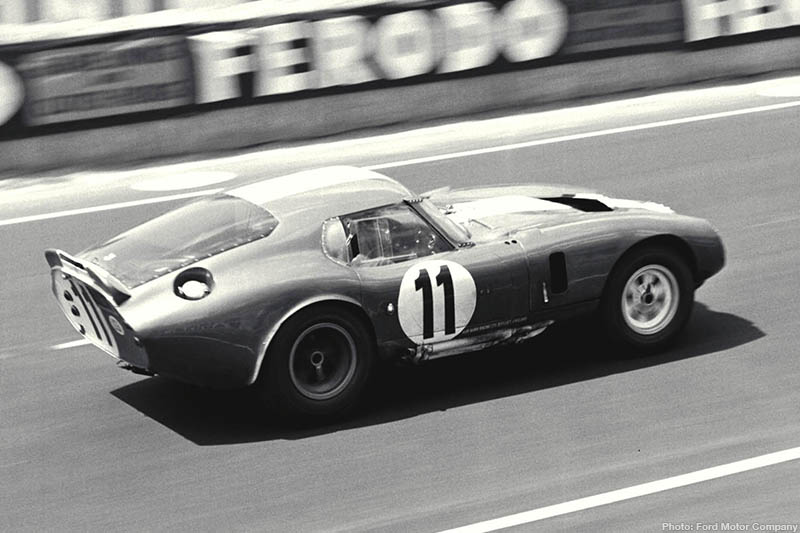
Just the AC Cars #11 entry finished, down in eight place. Ironically it was North American Racing Team-run 250LM that claimed victory by a margin five laps over another 250LM and a 275 GTB. At least Ford weren’t alone in melting down that year: only 14 cars were classified, with 37 retirements posted.
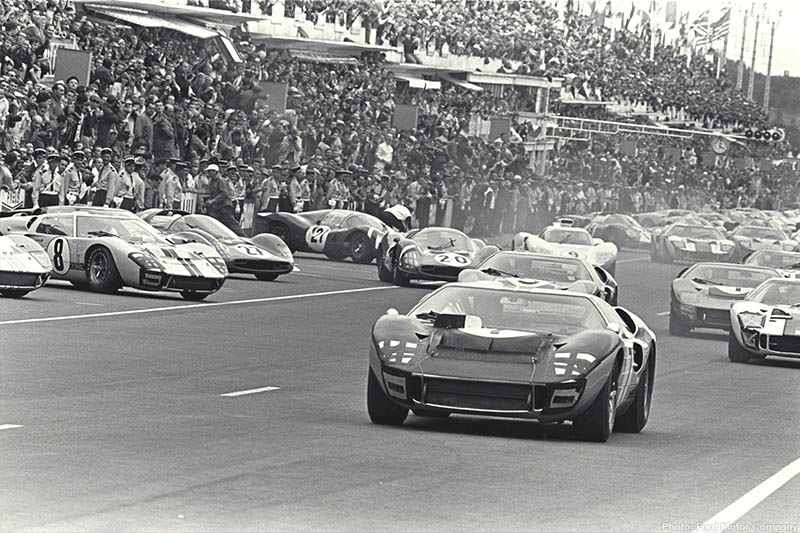
1966. It was time to get serious. A repeat would not be tolerated, so further development was piled onto the GT to ensure its reliability.

Wins at the Daytone 24 and Sebring 12 Hours were good omens ahead of the Big One, and just to be sure 13 GT40s took the start at Le Mans: five MkIs and eight MkIIs.
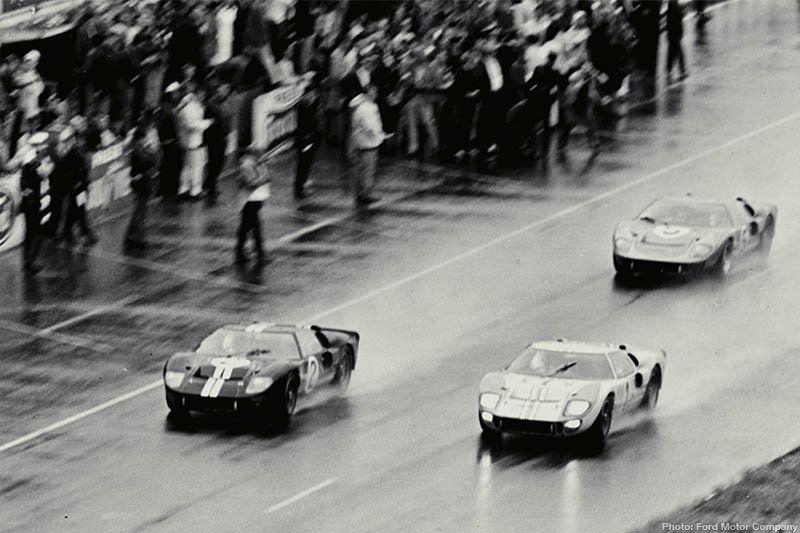
Again, attrition was enormous (though that wasn’t unusual for the time, unlike the modern era): just 15 cars finished out of 55 starters, but importantly for Ford it was a GT40 that crossed the line first. And second. And third. A photo finish was planned by Ford, to give the win to the Anglo-Kiwi #1 pairing of Ken Miles (Shelby’s fractious development driver) and Denis Hulme.
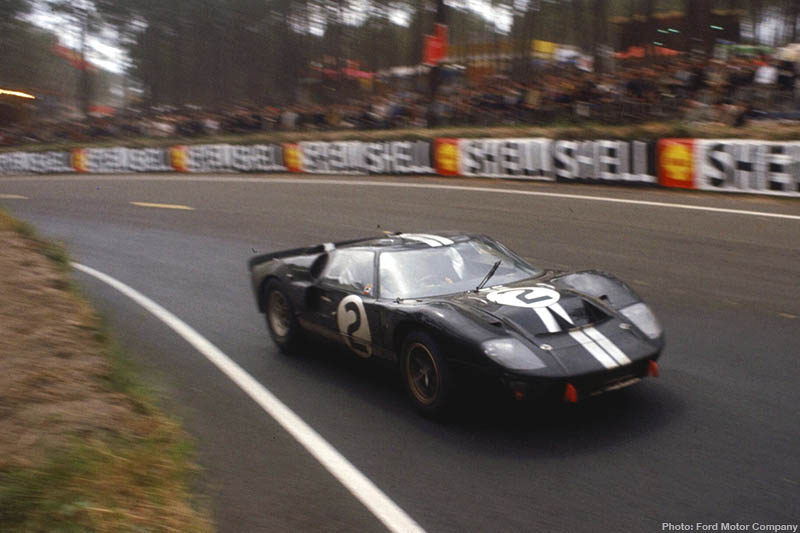
They would follow #2 across the line, but as they had started further down the grid it was expected that they would be handed the due to a strange total distance rule being brought into play. But the ACO being the ACO (the organising body of the Le Mans 24 Hours), they declared the #2 Bruce McLaren/Chris Amon car the winner on track and on paper after 360 laps.
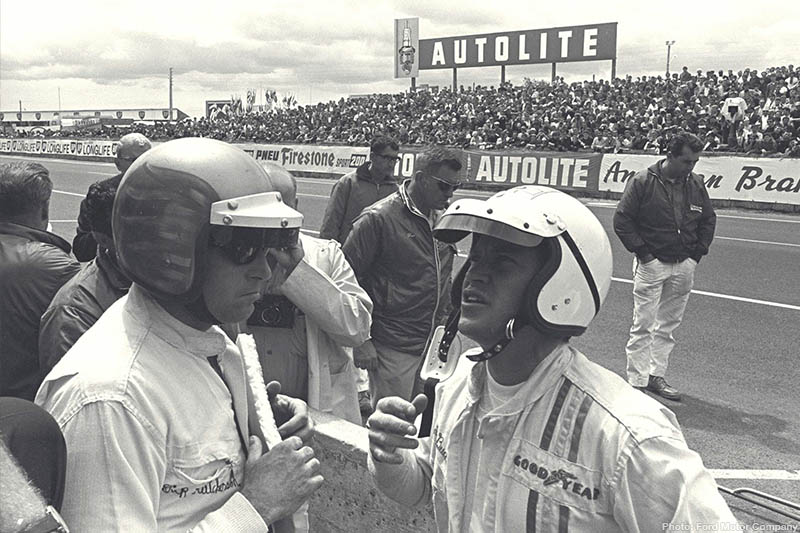
The all-American #5 Holman & Moody GT40 finished 12 laps down in third in the hands of Ronnie Bucknum and Dick Hutcherson.
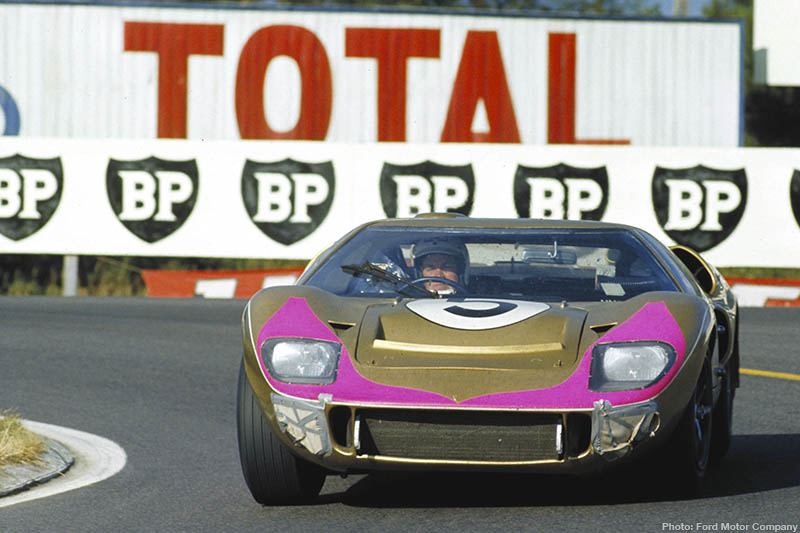
This time it had been the works Ferrari 330 P3s that hit trouble: accidents took out the works entries and the P2s were taken out of contention trying to keep up with the fleet of fast Fords. The trophy was on its way to Dearborn. Mission accomplished.
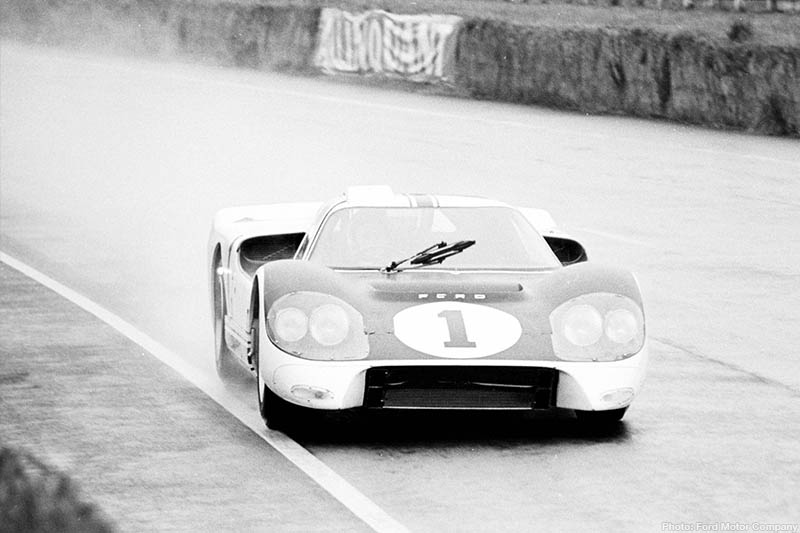
But no. One victory wasn’t enough to satisfy Henry Ford II. Development pressed on. However, a fatal testing accident of a Kammback J-car development GT40 driven by Ken Miles led to a complete redesign and the introduction of the MkIV.
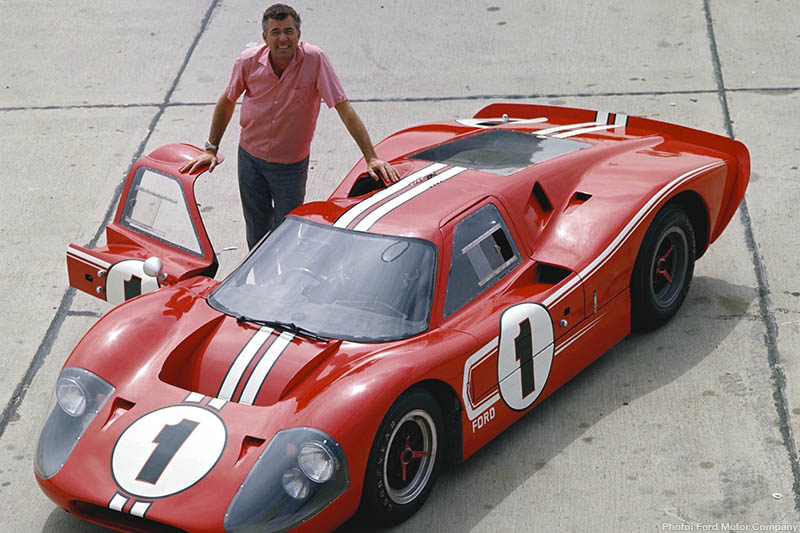
The MkIV used an advanced aluminium honeycomb monocoque, and its low-drag body raised the top speed to well over 200mph.
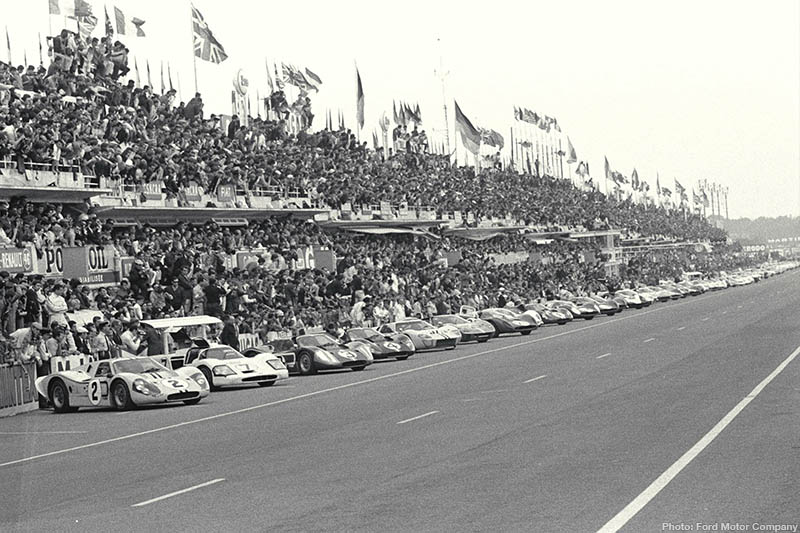
Four long-tail MkIV were part of a dozen GT40s on the 1967 Le Mans grid. Shelby American and Holman & Moody entered a pair each, plus a trio of MkIIBs uprated with the 7-litre block were also fielded by those teams backed up by a further trio of privateer MkIs.
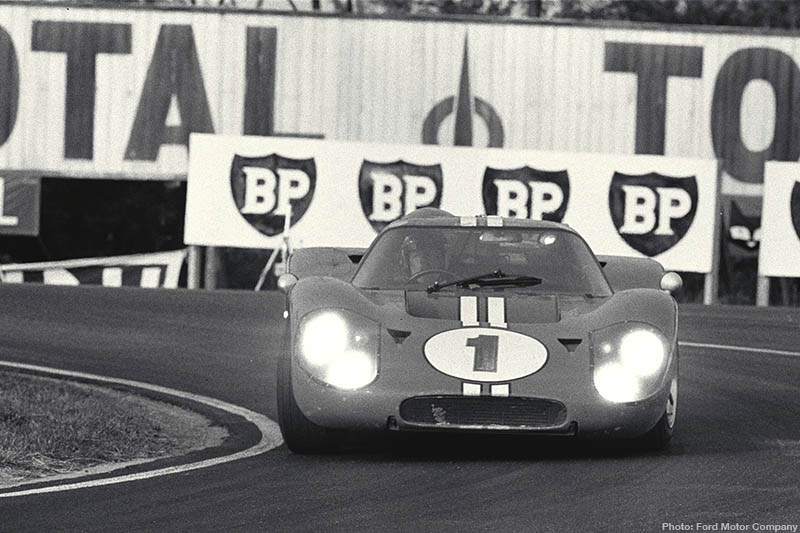
Lead driver Dan Gurney’s height had also required a further development to the MkIV: the ‘Gurney Bubble’ in the roof was added to accommodate his helmet.
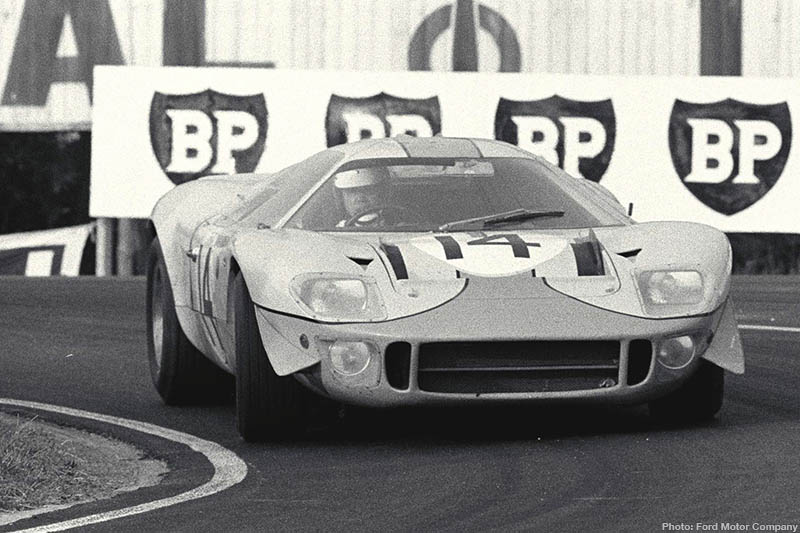
The extra two cars saw the return of a rejuvenated John Wyer: his JWA team created the Mirage M1: a lightweight GT40 with a 5.7-litre engine, and the first of a successful line of Ford-powered racing cars to bear the Mirage name.
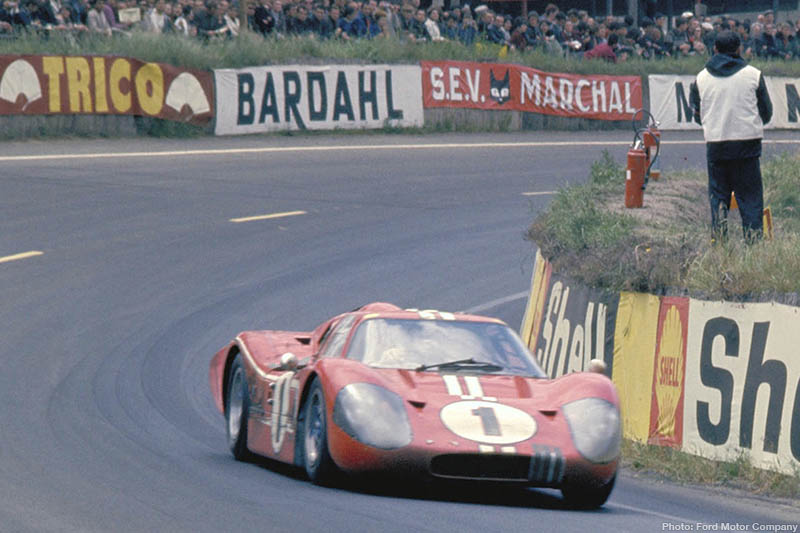
The race was famous for three things. Firstly, the cat and mouse game between the all-American #1 MkIV of Gurney/AJ Foyt and the factory Ferrari 330 P4 of Mike Parkes/Ludovico Scarfiotti. Parkes had been pressuring the leading Ford for a number of laps, flashing his lights and generally just annoying Gurney. So Gurney simply stopped by the side of the track. Parkes did likewise. And they sat there. Eventually Parkes realised that Gurney wasn’t going to relent and started up again; Gurney followed, and the two finished the race without further issue. I can’t imagine that happening this year, or at all in fact!
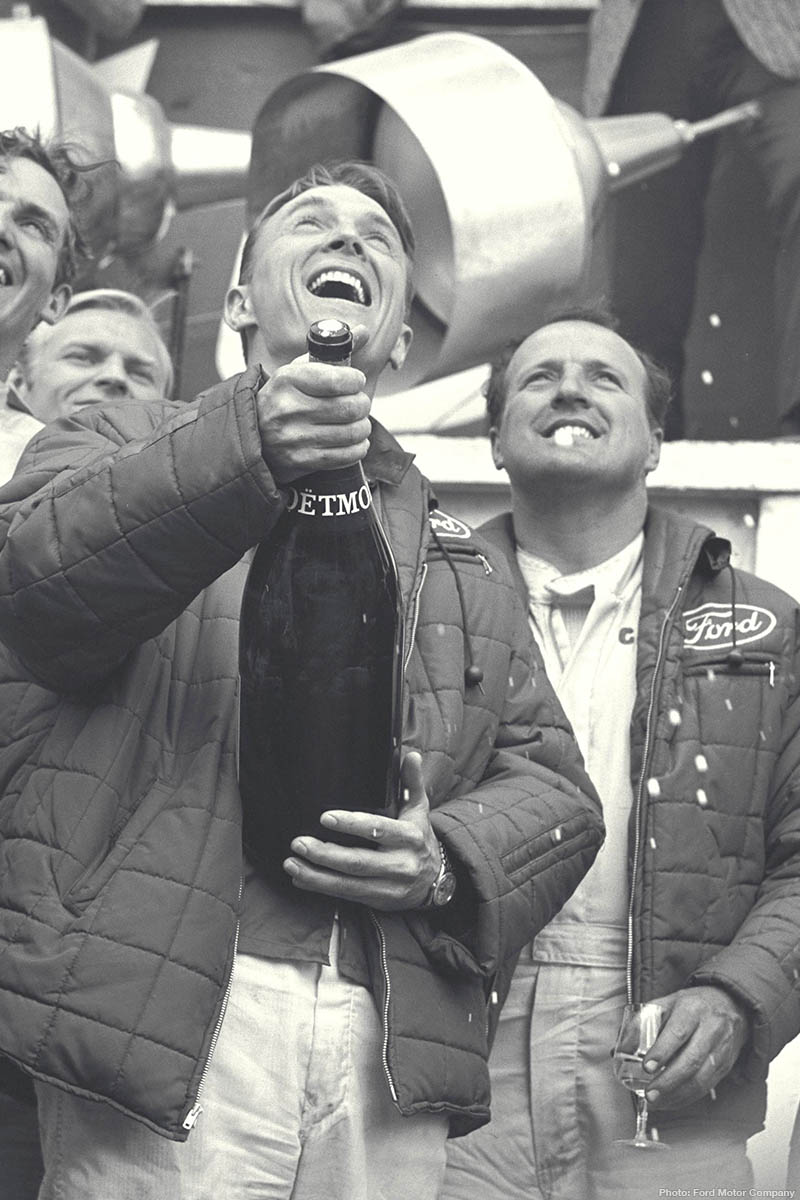
The second thing is the start of a new tradition for racing as a whole: the spraying of champagne: Gurney, not a drinker, took his magnum of champagne on the podium and unleashed it on the team and media gathered below, leading to a very happy champagne manufacturing and advertising industry from then on.
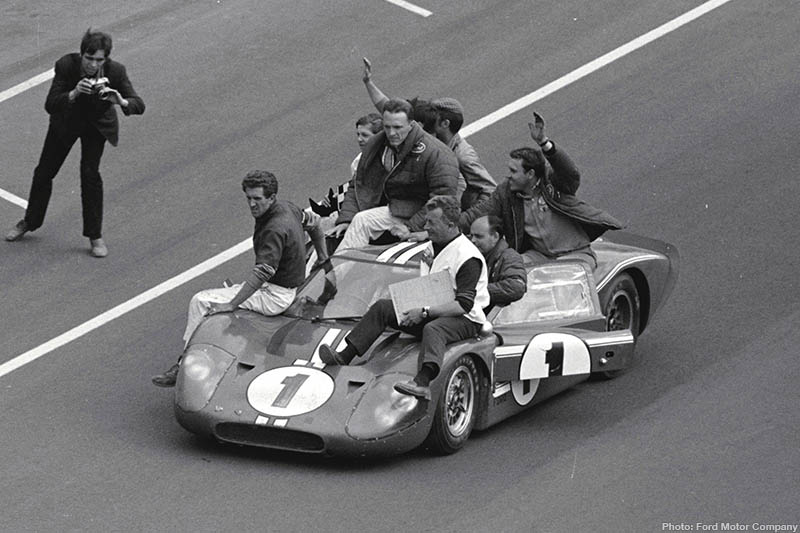
Most important for this story is the winner: the Gurney/Foyt car took the win, making it the first (and only, so far) all-American car, driver crew and team to win the Le Mans 24 Hours. The sister car took fourth, sandwiching two Ferraris; all the remaining Fords retired.
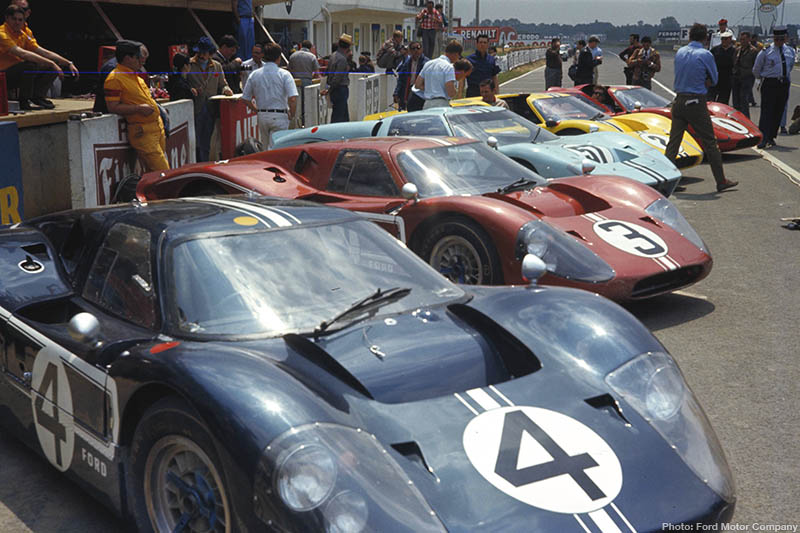
Mario Andretti drove the #3 GT40 MkIV in 1967 alongside Lucien Bianchi (he had also raced in 1966), but suffered a big crash 188 laps into the race.

The 1968 running of the Le Mans 24 Hours was delayed until September because of strikes in France, and saw the Fords go up against new Prototype-class Porsches, Alfas, Alpines and Matras. New rules limiting engine capacities to three litres had been introduced in line with Formula 1, though the big block Fords were still able to compete in the Sports category as they met the 50 car homologation rule.
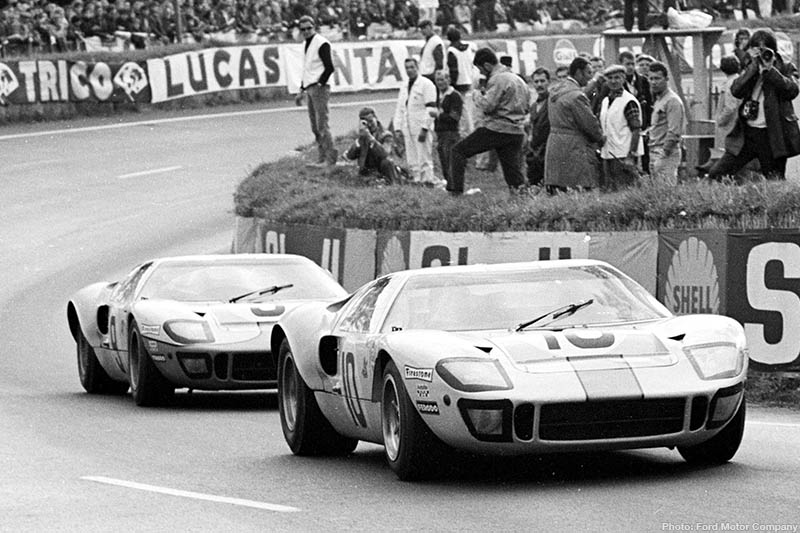
With the new rules, the factory Ford team had retired and the baton was handed over to John Wyer: he re-engineered his 5.7-litre Mirage M1 to create the Gulf GT40 MkI: a lightweight GT40 on a Mirage chassis with a 5-litre V8. A trio of JWA cars plus a pair of privateers took the start – Ferrari boycotted the race due to the rule changes, though there were still privateer entries.
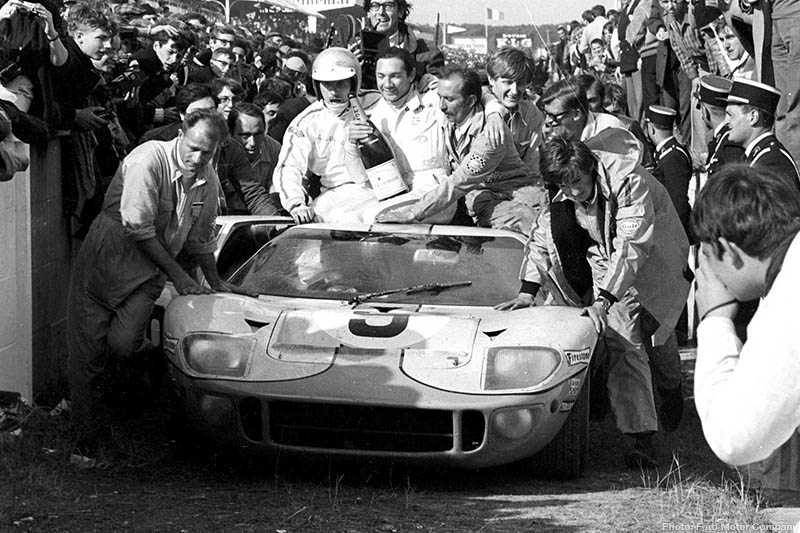
The JWA trio took the fight to the fragile but faster prototypes, though JWA themselves were down to just a single car come midnight. But it was leading. Pedro Rodriguez and Lucien Bianchi would bring their GT40 home in first place, five laps up on the chasing Porsches.
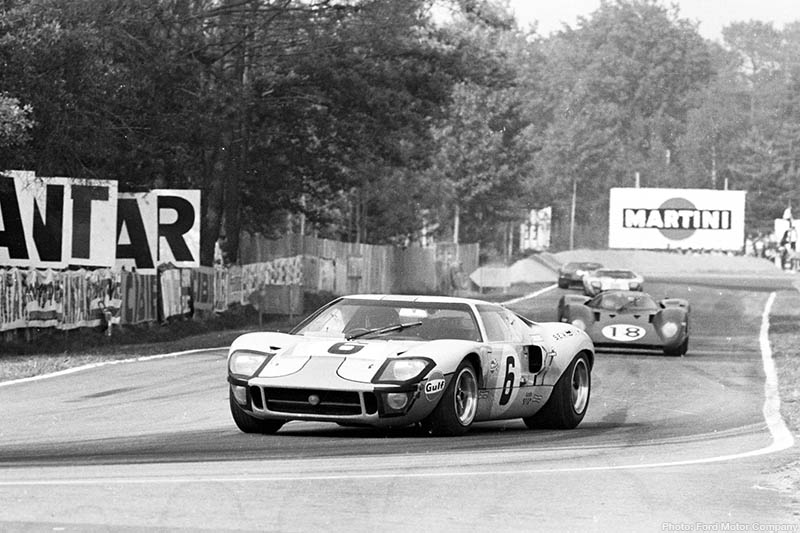
There was time for one last hurrah for the GT40 before the prototypes would come to rule the roost: in 1969 six Gulf GT40s were entered, with five taking the start. The pair of JWA GT40s again battled the prototypes, which included the nascent Porsche 917 and the new Ferrari 312P.
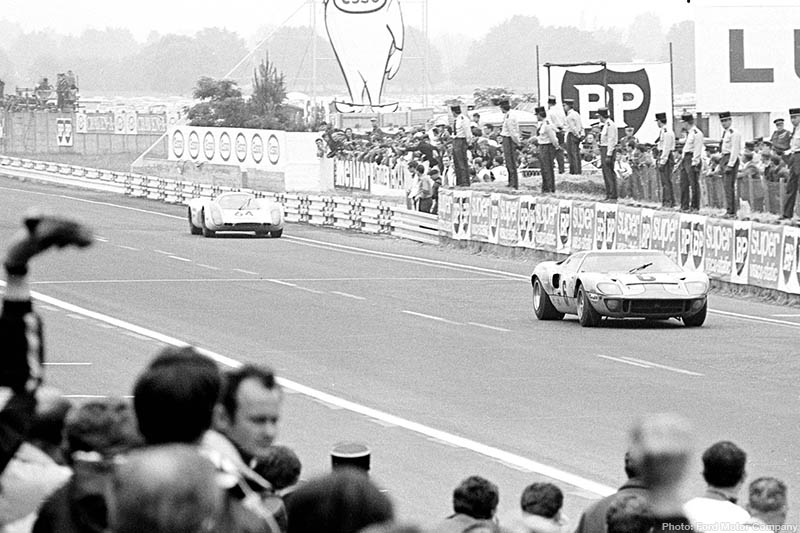
In the race the two Jacky Ickx/Jackie Oliver and David Hobbs/Mike Hailwood JWA Fords battled with the Hans Hermann/Gérand Larousse Porsche 908 and Jean-Pierre Beltoise/Piers Courage Matra MS650: brake problems for the 908 meant the race went to the Ickx/Oliver GT40 after a back and forth battle, with the GT40 winning by just a couple of seconds after 372 laps.
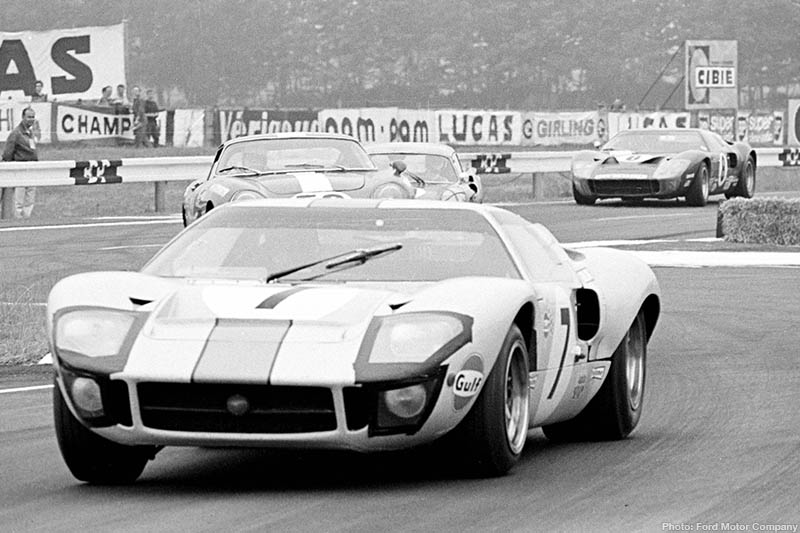
The second GT40 had a similar dual with the Matra, finishing four laps in arrears.
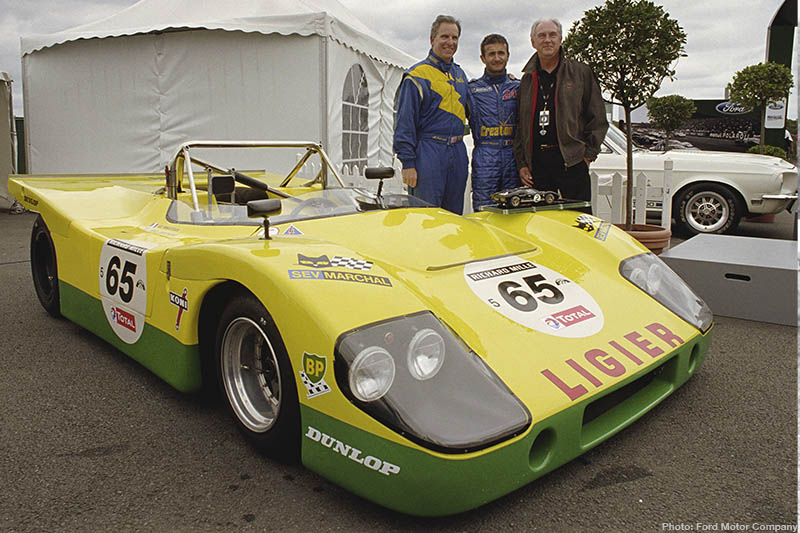
For the GT40 that was it: with over 100 cars built during the its tenure at the top, a final entry for a GT40 the following year wasn’t accepted and Ford reverted to providing engines to privateer teams. A Chevron and a Ligier kept the Blue Oval’s Le Mans aspirations alive in 1970, though neither car finished. In 1971, Guy Ligier’s JS3 prototype saw the first running of a Ford-Cosworth DFV at Le Mans.
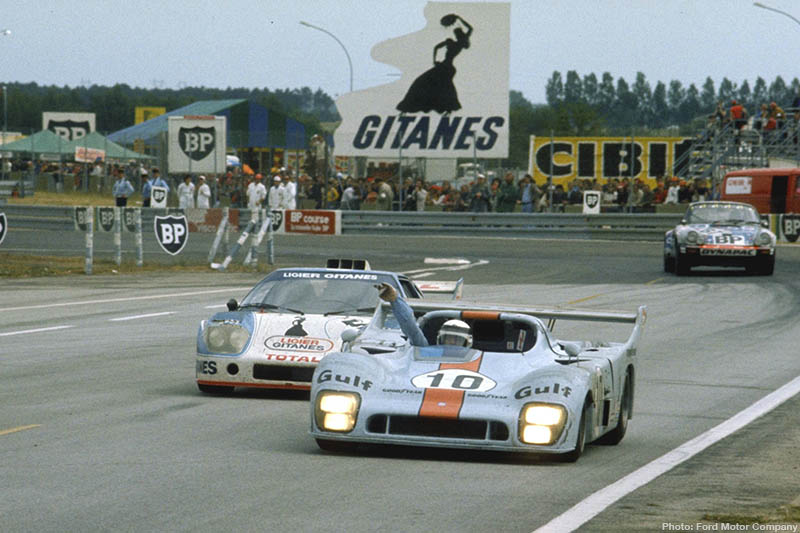
But after a short interval, Ford were back in the winners circle again courtesy of John Wyer, who had taken a sojourn to run the iconic Gulf-liveried Porsche 917 programme. The Mirage name had been kept going in Group 6 prototype racing, and in 1975 Jacky Ickx teamed up with Derek Bell to again win at Le Mans, this time in a Gulf Racing Mirage GR8 Ford-Cosworth powered prototype.
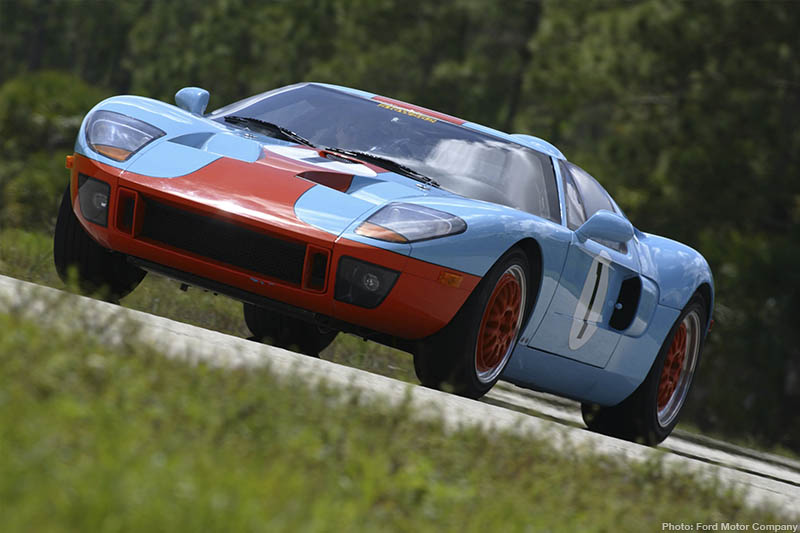
A further Ford-Cosworth win would come in 1980 courtesy of the French Rondeau team’s victory before Ford’s short-lived and unspectacular return as a constructor with the C100 in 1982. Since then Ford engines have occasionally popped up at Le Mans, most recently in Panoz and Saleen GT cars and Courage C65 prototypes, plus the appearance of the Ford GT-based Matech GT1 car in 2010. What price a factory return? With the current economic climate it seems unlikely, but maybe all it needs is another failed car company bid and an angry chairman…
Jonathan Moore






Don't forget the 3rd place finish in GTE Am class by Doran Racing in 2011.
Don't forget the 3rd place finish in GTE Am class by Doran Racing in 2011.
Spot the Chaparral in the background of one of the photos ...I have to say quite a few facts on here are slightly incorrect, but overall a good article
...I have to say quite a few facts on here are slightly incorrect, but overall a good article 
It's important to mention that GT40s did run at le mans after 1969. A gt40 (without a rear end has to be said) ran at the 1971 race. It didn't finish but it did participate and took the start.
@Andrew86 I think that was Robertson Racing
just wanted to say the mobile version of the site looks great.
@Aust55 @Andrew86 You are correct. I was reading another article too quickly.
An era of sheer determination and grit, man & machine against all odds. Nice one Jonathan, thanks for a refreshing trip back in time that captures the spirit of competition!
Just wanted to point out another great GT40 link, The Robertson racing Ford Gt entered le Mans in 2011 with ZERO factory support. A Husband and wife team took the podium in GTE in 3rd, the first husband/wife podium in Le Mans history, and she was the first woman on the podium since 1931. THAT is amazing.
For a fascinating in depth account of this whole battle between Ford and Ferrari, check out A.J.Baime's book, "Go Like Hell: Ford, Ferrari, and Their Battle for Speed and Glory at Le Mans." The whole behind the scenes activity; the personalities, and the corporate maneuvering is as involved as the technical aspects of the cars themselves.
@Andrew86 Doran Racing were the ones who built the car ofcourse
I think you got the 1966 story the wrong way around. #1 crossed the line first, but #2 got the win because it had started further behind. The picture that shows the #2 in front was taken after the finish line.
i saw a documentary on BBC 4 about this...was the best program that i saw in ages!!!!
i even went through the trouble of getting the webpage for you fellas!!!
http://www.bbc.co.uk/programmes/b0074n1j
Dean Aaron check out the livefyre widget they use on Speedhunters, this is what I was envisioning for your site. Also not just the comments section but the "Share This Article" section above
The History of an Icon, Dare I say, The GT40 is one greatest cars to ever set foot in LeMans and in automobile history.
Ford fairlane is a superb car. In 2014, Ford will be revolution in the territory of royalty and comfort. It gives mindblowing features. Also, In India, Ford is getting a good strategy for business. Its other competiters like Hyundai, Nissan, Maruti and Audi are also rising their prices. But they cannot ensure the stability like Ford Ikon and Ford Feigo.
In 2014, Ford will be revolution in the territory of royalty and comfort. It gives mindblowing features. Also, In India, Ford is getting a good strategy for business. Its other competiters like Hyundai, Nissan, Maruti and Audi are also rising their prices. But they cannot ensure the stability like Ford Ikon and Ford Feigo. But in the terms of looks, Ford <a href="http://www.winchbooks.com.au/ford-falcon-ltd-repair-manuals/">fairlane</a> was best.
In 2014, Ford will be revolution in the territory of royalty and comfort. It gives mindblowing features. Also, In India, Ford is getting a good strategy for business. Its other competiters like Hyundai, Nissan, Maruti and Audi are also rising their prices. But they cannot ensure the stability like Ford Ikon and Ford Feigo. But in terms of looks and comfort, ford <a href="http://www.winchbooks.com.au/ford-falcon-ltd-repair-manuals/">fairlane</a> was best.
In 2014, Ford will be revolution in the territory of royalty and comfort. It gives mindblowing features. Also, In India, Ford is getting a good strategy for business. Its other competiters like Hyundai, Nissan, Maruti and Audi are also rising their prices. But they cannot ensure the stability like Ford Ikon and Ford Feigo. But in terms of looks and comfort, ford fairlane was best.
MihaiFira do you mean a mock up that was used in filming Steve McQueens' film 'Le Mans'? because the only GT40 in the entry was entered by Malcom Guthrie and didnt show up for qualifying and certainly didn't take part in the race.
Andrew86 That was a quite different car based on the road version of the old GT40's but with a lot of technical advancements and classed as a 'grand tourer' rather than a 'sports' car